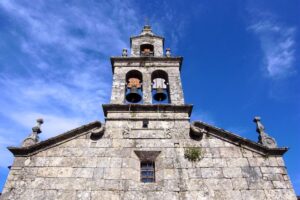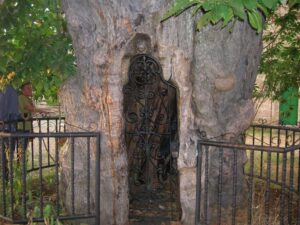
The wind lashes fiercely as the waves crash against the cliffs. In this natural landscape, a profound silence seems to envelop a forgotten corner: the Cemetery of the English.
What stories lie hidden behind those walls? What echoes of the past resonate in a place where the sea and the land meet in an eternal struggle? Sometimes, the most unexpected places reveal fascinating tales. In this space, every stone, every cross, every name is a fragment of a story that deserves to be discovered and understood.
Índice de contenidos
- 1 The History on the Costa da Morte
- 2 Details of the HMS Serpent Shipwreck and Its Impact
- 3 Architecture and Features of the Cemetery
- 4 The Solidarity of the Local Community and British Recognition
- 5 The Cemetery as a Tourist and Cultural Point of Interest
- 6 How to Get There and Visit Recommendations
- 7 Connection with Pilgrimage Routes and the Roads to Santiago
The History on the Costa da Morte
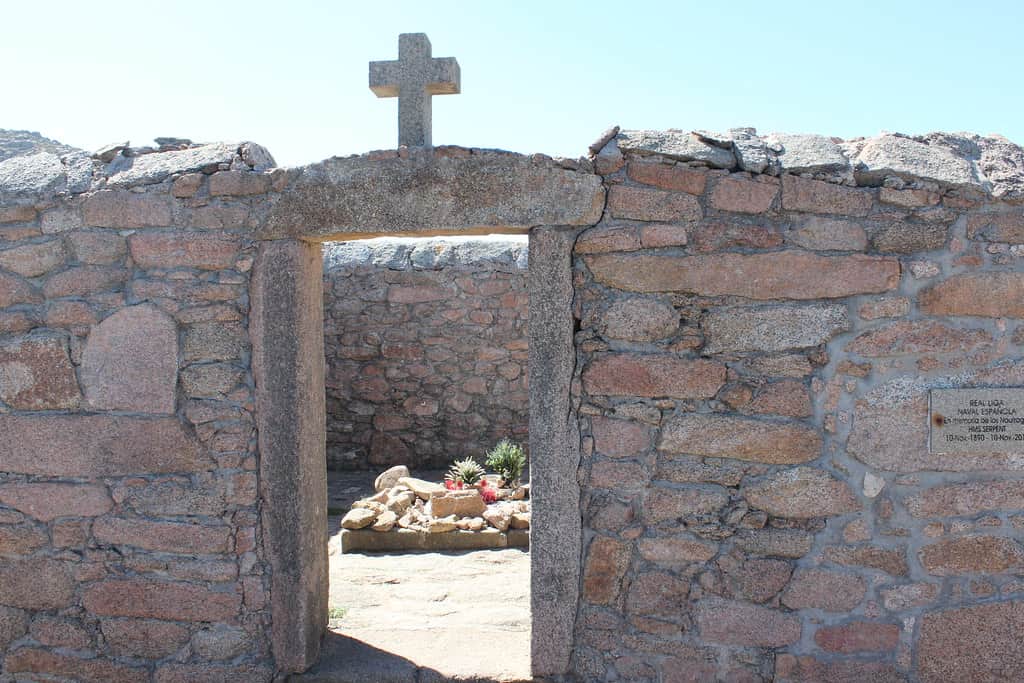
The Cemetery of the English is located in Camariñas, a municipality on the Costa da Morte, famous for its rugged and dangerous coastline.
This cemetery was created after the shipwreck of the HMS Serpent, a British torpedo cruiser that sank in late 1890. Of the 175 crew members, only 3 survived. The bodies that were recovered were buried on a nearby hill, which was later consecrated for this purpose.
The sea washed the bodies ashore on the Trece beach for several days. The people of Xaviña and Camariñas helped bury the dead. The local priest consecrated the land, which already contained the remains of another previous shipwreck, that of the Iris Hull in 1883.
Thus, the Cemetery of the English was born, a place dedicated to the victims of several shipwrecks in the area.
Details of the HMS Serpent Shipwreck and Its Impact
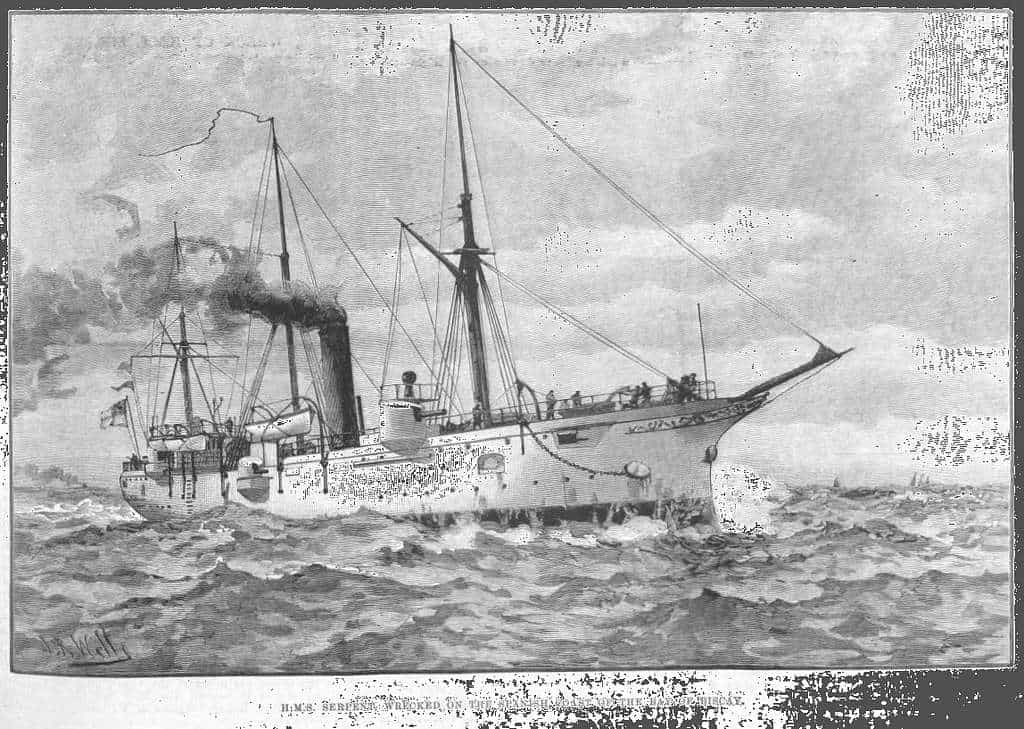
The HMS Serpent left Plymouth on November 8, 1890, heading for Sierra Leone. It carried 175 men, including officers and crew.
On the night of November 10, a storm and the dim light of the Cabo Vilán lighthouse caused the ship to run aground on the rocks of Punta do Boi. Captain Harry Leith Ross ordered the ship to be abandoned, but only 3 sailors survived. For weeks, the sea returned bodies to the shore. The locals organised the collection and burial.
This disaster shocked both Galicia and the British Royal Navy. As a result, the requirement for life jackets on all Royal Navy ships was introduced, improving maritime safety.
Architecture and Features of the Cemetery
The site covers about 3,000 square metres and is surrounded by a stone wall with iron railings. The main entrance features an arch with the inscription “British Cemetery“. The graves feature simple crosses made of iron, stone, or wood. Some marble tombstones were brought from Europe and stand out among the graves.
The cemetery’s design is concentric: at the centre are the officers’ graves, and on the outer perimeter, the crew. Originally, there was a division between Catholics and Protestants, but this was removed after a restoration in 1990.
It is a sober place, respectful of the environment and the memory of the deceased.
The Solidarity of the Local Community and British Recognition
After the shipwreck, the community of Camariñas showed great humanity. The priest of Xaviña organised the burial and support for the survivors. The British Royal Navy thanked this help with symbolic gifts: a barometer for the village, a gold watch for the mayor, and a shotgun for the priest.
For years, British warships visited the site to pay tribute with salutes and wreaths of flowers. This recognition reflects the importance of cooperation between communities in the face of maritime tragedies.
The Cemetery as a Tourist and Cultural Point of Interest
Today, the Cemetery of the English is much more than a resting place: it is part of the European Route of Singular Cemeteries, making it an internationally significant tourist and cultural attraction.
Located in an awe-inspiring setting facing the Atlantic Ocean, on the Costa da Morte, this small place is a testament to maritime tragedies and the deep relationship between humanity and the sea. Its atmosphere invites reflection and remembrance, making it a must-visit stop for travellers seeking meaningful experiences.
Very close by is Monte Branco, a giant dune that offers stunning views and a unique natural environment. The combination of history, landscape, and heritage makes this area a complete destination, ideal for those who wish to experience the Costa da Morte from a cultural and emotional perspective.
How to Get There and Visit Recommendations
To visit the Cemetery of the English, the first step is to take the AC-432 road, which crosses part of the Costa da Morte. Near a nearby restaurant, you will see a sign indicating the turnoff to the site.
From there, you will access a rural path that, although narrow, is in good condition and well signposted. The journey is short and straightforward. This allows you to enjoy the landscape during the trip. The natural environment is peaceful, quiet, and conducive to a serene visit, with no rush.
Once there, it is recommended to walk slowly and pay attention to the inscriptions and details on the tombstones, many of which reflect the tragedy of the shipwrecked sailors.
It is important to remember that this is a space with significant symbolism, so one must always maintain a respectful attitude.
In addition, the area offers the possibility of doing hiking routes or pilgrimage sections, as many travellers incorporate this place as a stop on their spiritual or cultural journey. The union of sea, history, and landscape creates a unique experience.
The Cemetery of the English goes beyond its funerary function: it is a place of memory, a symbol of tragedy, solidarity, and respect for the power of the ocean. Visiting it is a way of paying tribute to those who lost their lives on these shores and keeping the story alive in a deeply emotional corner.
Connection with Pilgrimage Routes and the Roads to Santiago
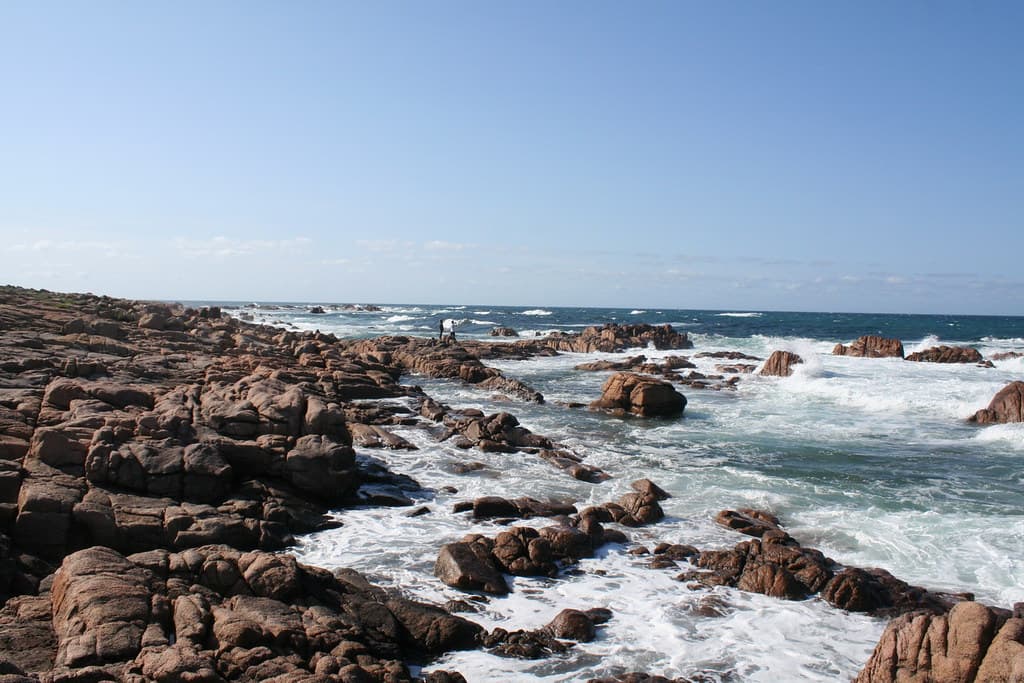
Many pilgrims feel that the Camino does not end in the Plaza del Obradoiro. After reaching Santiago de Compostela, they begin a second, more intimate and contemplative stage: the route to the end of the world, the place where the land seems to surrender to the sea. It is then that the Costa da Morte appears on the horizon, and within it, the Cemetery of the English.
Although it is not part of the official route of the Camino de Finisterre or Muxía, its proximity to the latter has made it one of those detours that many choose to take voluntarily. Just a few kilometres from Muxía, visiting this place is a way to close the journey in a space that, like the Camino itself, speaks of loss, humanity, and transcendence.
- Many who have walked the Camino from Ribadeo venture along the coast seeking answers different from those found between ancient stones and monumental squares.
- Those who have taken the Camino from Bilbao bring with them the memory of the northern cliffs, the sea as a constant guide, and find in Camariñas and its coasts a kind of emotional echo.
- And those who have experienced the Camino from Tui discover in this cemetery a poetic contrast: from the green of the Miño to the grey of the Atlantic, from the bustle of the Camino to the calm of this secluded place.
Even those who have chosen an organised Camino de Santiago appreciate the opportunity to add, at the end of their journey, this symbolic corner. Because the journey continues, even when the feet stop. Because some places, like this cemetery open to the sea, are not in guidebooks or marked with yellow arrows, but they leave a mark. A different mark, one that stays.




